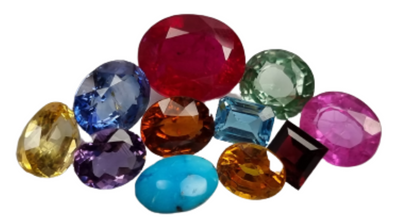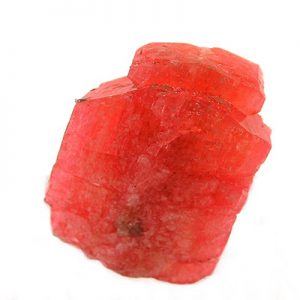Serandite: Gemstones Information
Serandite is a fascinating mineral known for its vibrant pink to reddish-orange color and its occurrence in some of the world’s most renowned mineral localities. Here’s a comprehensive exploration of serandite, covering its properties, occurrences, uses, and significance.
Serandite is a rare mineral belonging to the group of silicate minerals known as the inosilicates. Its chemical composition is represented by the formula NaMn2(Si3O8)(OH), indicating its composition of sodium, manganese, silicon, and oxygen atoms, along with hydroxide ions. Serandite typically occurs in prismatic or tabular crystal habits and is often found associated with other minerals such as natrolite, analcime, and aegirine.
Properties of Serandite:
Color: Serandite is most famous for its striking pink to reddish-orange color, which can vary in intensity depending on impurities and crystal structure.
Crystal Structure: It crystallizes in the monoclinic crystal system and often forms prismatic or tabular crystals with distinct cleavage.
Hardness: Serandite has a Mohs hardness of approximately 5 to 5.5, making it moderately hard.
Luster: It typically exhibits a vitreous to pearly luster on its cleavage surfaces.
Transparency: Serandite is usually translucent to transparent, allowing light to pass through its crystal structure.
Serandite is considered a rare mineral, and notable occurrences are primarily found in specific geological settings. Some of the most well-known locations include:
Mont Saint-Hilaire, Canada: The Mont Saint-Hilaire complex in Quebec, Canada, is renowned for its exceptional diversity of minerals, including serandite. Serandite crystals from this locality are highly sought after by mineral collectors due to their vibrant color and excellent crystal habits.
Kola Peninsula, Russia: Another significant locality for serandite is the Khibiny and Lovozero massifs on the Kola Peninsula in Russia. Serandite can be found here associated with a variety of other minerals in alkaline pegmatites and syenites.
Greenland: Serandite has also been reported from Greenland, particularly from the Ilimaussaq complex, where it occurs in association with aegirine, nepheline, and other rare minerals.
While serandite is primarily valued for its aesthetic appeal and rarity, it does not have significant industrial applications due to its scarcity and relatively small occurrences. However, it is highly prized by mineral collectors and enthusiasts for its vibrant color, distinctive crystal forms, and association with other rare minerals.
Significance and Value:
Serandite holds significant value in the world of mineralogy and geological research due to its rarity and association with alkaline igneous complexes. Its presence in specific geological environments provides valuable insights into the processes of magma crystallization and mineral formation in these unique settings. Additionally, serandite specimens from renowned localities such as Mont Saint-Hilaire are highly prized by collectors and can command significant prices in the mineral market.
In conclusion, serandite is a rare and visually stunning mineral prized for its vibrant pink to reddish-orange color and occurrence in select geological environments such as Mont Saint-Hilaire and the Kola Peninsula. While it lacks significant industrial applications, its scarcity and aesthetic appeal make it a valuable and sought-after addition to mineral collections worldwide.





